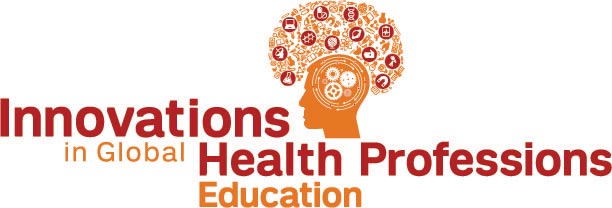Besides health professionals’ expertise in care, communication is important for patient wellbeing3. Proper communication illuminates with empathy what is important for a patient. This will make it more likely that patients change their attitudes and behavior—after all, to agree on a therapy requires that patients gain some understanding of the problem. Eventually, a patient will be healthy again or at least feel better. This increases physicians’ self-confidence, helping them work and communicate more successfully.
That’s in short the self-assuring cycle of effective communication. Two aspects of today’s healthcare make effective communication even more important: patients of the 21st century are more outspoken about their care experience, and often more health-literate, than there were in previous generations. Health professionals, on the other hand, increasingly need “to do more with less”, and their performance is closely watched. This puts additional weight on healthcare communication to succeed.
Many theories of and programs for communication skills training in healthcare are available. However, first-class evidence for the effectiveness of such programs is amiss. Comparing and meta-analysis of studies from culturally different countries (e.g., Japan4 and the U.S.) or even institutions with a different emphasis on communication skills do not look prudent. Thus, a 2016 study2 from the Cleveland Clinic’s Center of Excellence in Healthcare Communication with almost 3,500 participants fills an important gap in this regard.
Starting in 2010, doctors and communication experts at the Cleveland Clinic developed their own curriculum for communication skills. In 2013, they published a new framework1 that resulted from the first communication courses, called the R.E.D.E. (pronounced: ‘ready’) model. It centers on the physician-patient relationship and distinguishes three phases of building it: establishment, development and engagement.
It is difficult to teach communication; it should be spontaneous to appear as genuine. Nevertheless learners will benefit from a skills checklist, such as provided in the 2013 article, because it allows them to reflect on their own abilities and previous conversations patient. Some mnemonics will also help make good communication a habit that flows easily.
What stroke me very plausible in the R.E.D.E. framework is to start off with the ‘emotion bank’ concept: as physicians and patients interact, they build an emotion bank that permits deposits and withdrawals. The more deposits have been made, the better withdrawals can be tolerated. In clinical practice, withdrawals will happen in a literal sense: sometimes, physicians will need to withdraw from patients physically, to save time, and psychologically, to prevent too deep an emotional involvement.
Some items from the checklist worth of mentioning:
- During relationship establishment, “ask ‘what else?’ until all concerns are identified” and “demonstrate empathy using SAVE” (support the patient, acknowledge their distress, validate their feelings, name their emotions).
- During relationship development, “maintain the narrative with verbal & nonverbal continuers” and ”explore the patient’s perspective with VIEW” (vital activities, ideas, expectations, worries).
- During relationship engagement, “provide closure”—i.e., don’t just turn away and exit the room—and “dialogue throughout using ARIA” (assess patient’s health literacy, reflect, inform, assess patient understanding).
Does the framework live up to its promises? The 2016 study2 with 3,500 physicians is out to tell us. More than 1500 of them participated 2013 and 14 in the communication program, while the remaining physicians did not attend yet, or they participated in earlier, pre-R.E.D.E. program versions. But how can changes in physicians’ communication behavior be measured? For this, Medicare assessment scores came in handy: patients use them to rate clinical and care provider experience.
Most markedly, ratings for conveying clear information, knowing the patient’s history and expression of respect increased for physicians who underwent R.E.D.E. training, compared with those who did not. Statistically significant increases were small, but the authors emphasize that a one to two point increase can signify a percentile shift of 14 points, which may considerably increase the Medicare revenues.
Physicians initially expressed frank skepticism about the use of the program. Only 20% considered the course would be valuably spent time. This grew to 58% after the course. Importantly, doctors’ self-assessments of burnout and emotional exhaustion were lower after the course. This indicated that the R.E.D.E. training creates a win-win situation for both stakeholders of care provision, patients and physicians. These outcomes possess high credibility because the authors used a wealth of data.
As I mentioned above, patients watch more closely how health professionals act. This is part of a general trend to hold care providers and institutions more accountable for their performance. However, if physicians do not receive teaching how to cope with such tougher standards, both—professionals and patients—will grow frustrated. Together with other programs by the Cleveland Center, the REDE framework suggests one way how boost the care communication cycle, making physicians feel more self-efficient and patients more appreciated.
Mirko von Elstermann
Read more: 1. Windover AK, Boissy A, Rice TW, Gilligan T, Velez VJ, Merlino J. The REDE model of healthcare communication: optimizing relationship as a therapeutic agent. Journal of Patient Experience. 2014;1(1):8-13. http://dx.doi.org/10.1177/237437431400100103
2. Boissy A, Windover AK, Bokar D, Karafa M, Neuendorf K, Frankel RM, Merlino J, Rothberg MB. Communication skills training for physicians improves patient satisfaction. J Gen Intern Med. [Epub ahead of print] 2016 Feb 26. http://dx.doi.org/10.1007/s11606-016-3597-2
See also 3. Rao JK, Anderson LA, Inui TS, Frankel RM. Communication interventions make a difference in conversations between physicians and patients: a systematic review of the evidence. Med Care. 2007;45(4):340-349. http://dx.doi.org/10.1097/01.mlr.0000254516.04961.d5
4. Fujimori M, Shirai Y, Asai M, Kubota K, Katsumata N, Uchitomi Y. Effect of communication skills training program for oncologists based on patient preferences for communication when receiving bad news: a randomized controlled trial. J Clin Oncol. 2014;32(20):2166-2172. http://dx.doi.org/10.1200/JCO.2013.51.2756

